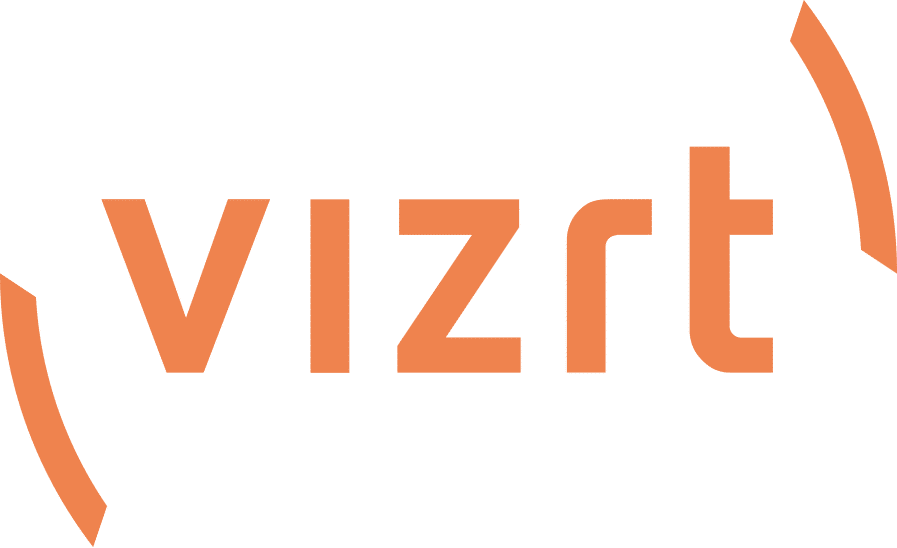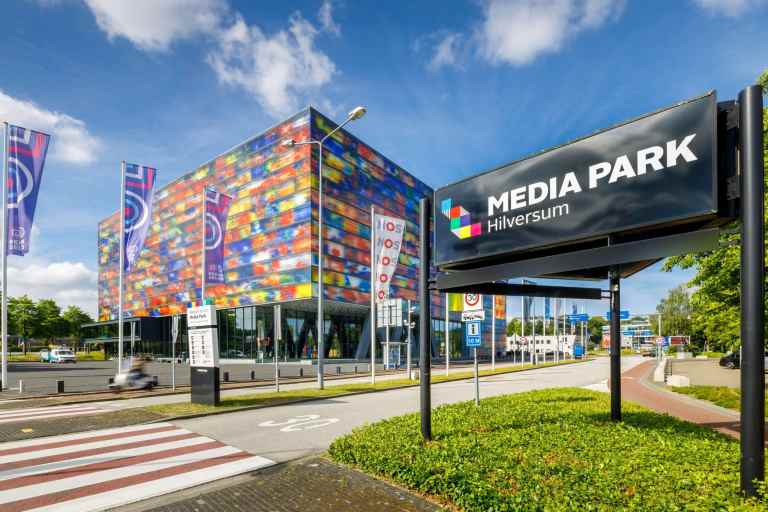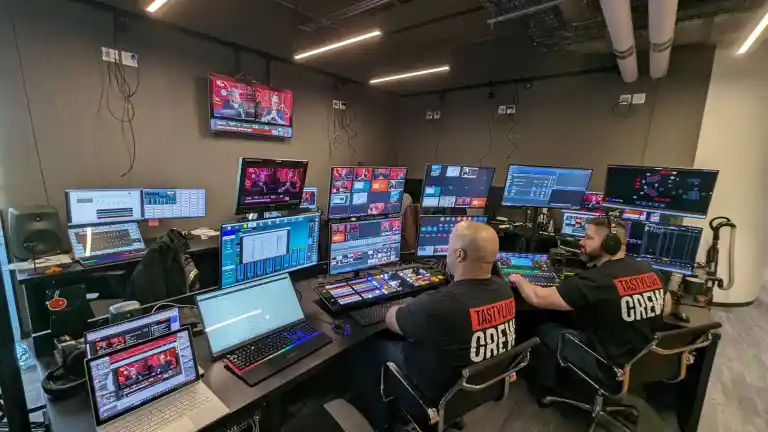Vizrt Saves eGaming Producer LocalGames From COVID Disaster
“Because all our content is on network, we require a workflow that allows us to efficiently stream video to the network,” says Bernabe Pizurnia, CEO of LocalGames, a Latin American video production company. “And that’s why we chose to go with NewTek (Now Vizrt). Their products are designed with livestreaming in mind.”
In 2020, LocalGames ran smack into COVID-19 only to realize their traditional workflow for producing live broadcasts of eGaming tournaments was completely unworkable. No longer could the company produce their broadcasts from auditoriums packed with gaming enthusiasts, eager to watch their joystick heroes battle it out for millions in prize money. The gaming tournament broadcasts, which are the company’s lifeblood, would continue, but all competitions would be virtual. No spectator-packed venues, no competitors on-site, international borders closed. The company was given just over a week to adapt to that change; adapt or die. To survive, LocalGames needed to do a quick 180 and redesign their productions from the ground-up.
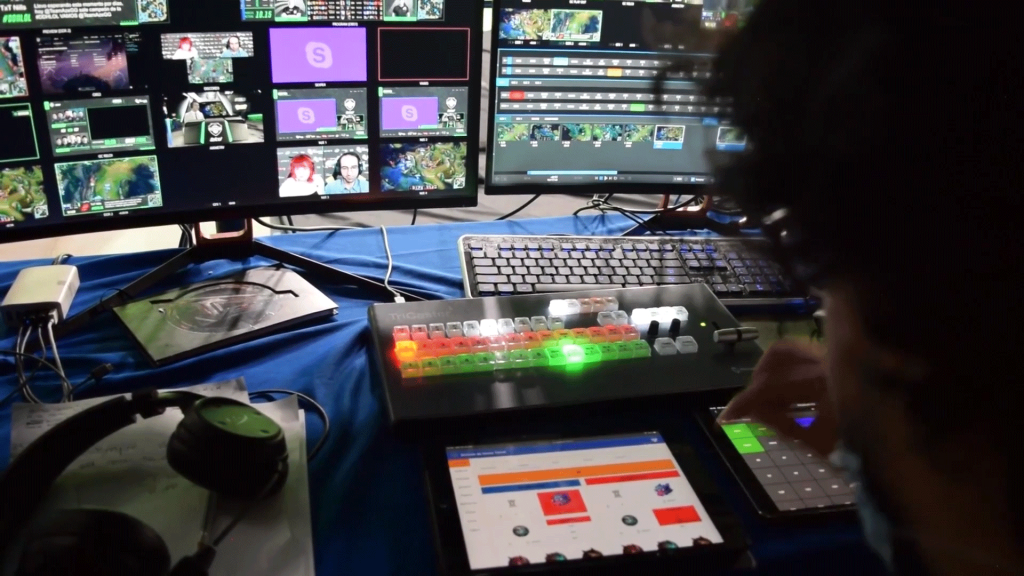
Confronted with this bleak new reality, the team at LocalGames was convinced they’d need to spend a ton of money on new equipment, plus a ton of time implementing some complicated, convoluted workflow solution in a desperate attempt to save their business.
Then along came Vizrt. Not only did LocalGames survive, but they have gone on to even greater heights, coronavirus be damned.

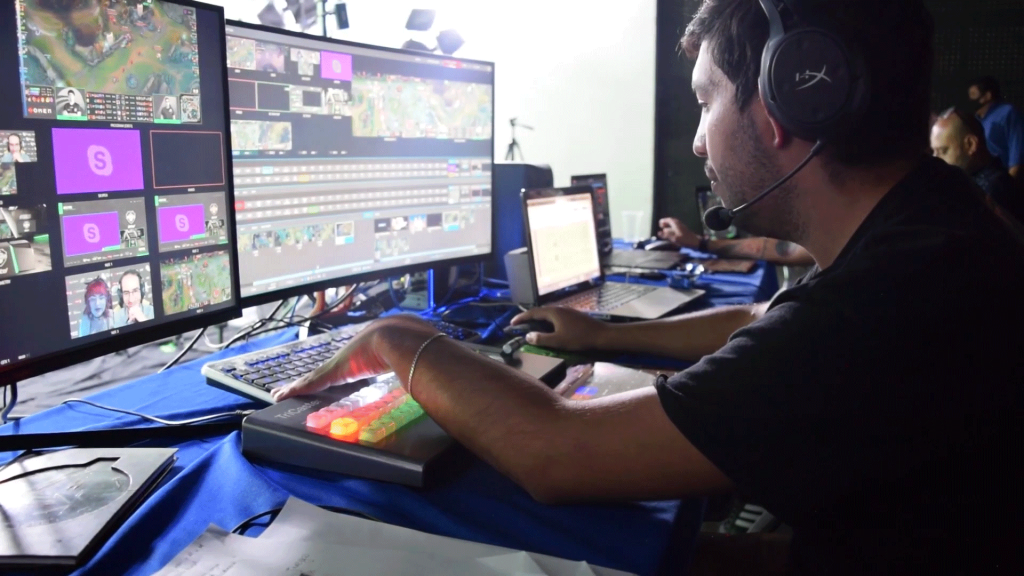
‘A very comprehensive piece of kit’
“We work with international esports companies like Riot Games (developer of League of Legends, among others) and LVP (professional esports tournament promoters for Fortnite, Free Fire, League of Legends and other top eGames) to produce live eGames tournament broadcasts,” says Pizurnia from Mexico City, preparing for a tournament for Garena Free Fire, a battle free-for-all game played on mobile devices.
“We are the only company that does this on a big scale in Latin America,” he says. “There are similar companies in the U.S. and Europe, but not in this part of the world. We’ve been to Peru, Argentina, Brazil, Chile, and now we’re in Mexico. We don’t have a large production staff, but we have people from Venezuela, Uruguay, Chile and Mexico on our team. We are truly an international company, a reflection of the sport we cover.”

ESPORTS: AN INTERNATIONAL SUCCESS STORY
In the U.S. alone, esports revenue was expected to top a billion dollars in 2020 before the pandemic hit. But since 2012, worldwide esports revenue has increased tenfold. With top team prizes for the most prestigious tournaments topping the million-dollar mark, there’s big money in esports, and LocalGames is well positioned to ride the wave of success.
“This is an audience with a high income,” says Pizurnia. “To participate in eGaming, whether you’re a professional gamer or not, requires topquality hardware. It takes a good computer, a good graphics card. Unlike traditional sports like soccer, where all you need is a ball, esports requires a certain financial commitment. So, our audience is generally upscale. Our viewers are about 90% male, and they range in age from 12 to 50.”
According to Pizurnia, more older viewers, who started with their 80’s game consoles, are becoming committed fans of the sport. The audience for LocalGames’ productions are technologically savvy, and unlike traditional sporting events, they are not tied to mainstream media. Esports viewers tend to watch on their computers and mobile devices.
“The big difference between esports production and regular TV sports production is that we broadcast without any commercial interruptions and our broadcasts normally go to platforms like Twitch or YouTube or even direct link,” Pizurnia told me. “The stability of the network and workflow has to be very precise. The tournaments we cover routinely go for four or five hours straight with no breaks. It’s one match after another. We’ve gone as long as seven hours at a stretch. It makes for a long day for the crew.”
DELIVERING THE GOODS
Producing content from anywhere in Latin America can present a challenge, especially when productions stream to a variety of sites. “Distribution all depends on the clients,” Pizurnia says. “Transmission is always going to be streaming on the official channel of the client. If it’s Riot Games, the program is going to go to Riot Games LATAM and tomorrow, for Garena, it will be on the Gaia Gaming Channels. So, we always work as an intermediary producer. We send the content where they tell us to.” To help distribute that content more efficiently, LocalGames built their own CDN on Amazon, a network that blankets Latin America.
ENTER VIZRT; THE ULTIMATE STREAMING SOLUTION
To accomplish their post-pandemic goals, LocalGames purchased a TriCaster® Mini 4K. The unit is easy to transport wherever needed and powerful enough to handle even complex productions. For LocalGames, purchasing their TriCaster was more than just a workflow efficiency decision. It also made financial sense. “We are competing against traditional production companies with traditional workflows for these production jobs,” Pizurnia says. “With their old technology, their end-product is very expensive compared to ours, and ours is much more versatile because the workflow is already designed to stream. That’s one reason we’re as successful as we are.”
MAKING THE TRANSITION TO TRICASTER
Many staff members at LocalGames came from that legacy world of broadcast production, but as LocalGames’ broadcast engineer and Chief TriCaster Operator, Rodrigo Cotiart told me, “I found the TriCaster to be very easy to learn. And I’m not the sort of person who likes to read manuals. I’m much more of a doer. That’s the way I learn. So, I just got in there, sat down at the TriCaster, and got my hands dirty. I found it to be very intuitive. That’s how I learned to record macros, create camera pre-sets, modify the Multiview, and build buffer animations. I can’t stress enough how important it is to get your hands dirty. I still haven’t read the manual.”

3PLAY MAKES REPLAYS EASY
Just like any other sports broadcaster, replays are an important production tool in LocalGames’ production arsenal, and the company has made use of Vizrt’s 3Play® to produce replays for their eGaming programs. It was their first Vizrt device, purchased before COVID. The reliability and versatility of the 3Play was one of the reasons LocalGames felt so comfortable turning to Vizrt when the pandemic hit.
“I was used to using EVS or K2 for replays back in my broadcast days,” Cotiart says. “The transition to using 3Play was extremely simple. The only thing that changed was the location of the buttons. And honestly, I find the 3Play to be much more versatile and dynamic than those other machines, and all at a much smaller price point. Our experience with the 3Play has been nothing but positive.”
In the world of eGaming production, replays play an important role, unique to eGaming. They are used to hold audience in the brief lulls between matches during a tournament.
“Between matches we can lose up to 60% of our audience,” Bernabe Pizurnia says, “So it’s a challenge to come up with unique, fun content for the audience to enjoy in those few minutes between matches. That’s the time when we can use our 3Play to do replays. Our audience is like a community and between matches we try to engage them, encourage participation, and allow them to become part of the show. In that way, we hope to extend their viewership and expose them to the client’s message for longer periods of time.”
SPARK AND NDI®: A UNIQUE USE
LocalGames makes extensive use of NDI® (Network Device Interface), a revolutionary software standard developed by NewTek (Now Vizrt) that enables video-compatible products to communicate, deliver, and receive high-definition video and audio over a computer network in a high-quality manner suitable for switching in a live production environment. “Even before we bought our first piece of NewTek (Vizrt) gear, we were using NDI under the free protocol,” Pizurnia told me.
The company also owns four Vizrt Spark Plus units, which play a vital role in their redesigned productions. Spark Plus converters allow producers to capture video from digital cameras and other devices wirelessly or over an Ethernet network. The Spark unit converts HDMI or SDI video sources to NDI making it available as a video source.
While many Spark owners use their units to integrate remote cameras anywhere on their network into a TriCaster, LocalGames found a unique way to use the versatile devices. After purchasing their TriCaster Mini 4K, the company had legacy, non-NDI equipment they needed to continue to use. Plugging that legacy equipment into a Spark device allowed LocalGames to continue to use this old equipment and still utilize all the technological advantages their TriCaster offers
SEND IN THE FLYING MONKEYS; VIZRT’s WIZARDS SAVE THE DAY
In early 2020, the whole world went on lockdown. A call came into LocalGames just before a major tournament. That weekend’s tournament was cancelled, but the weekend following, just a few days in the future, the next tournament would go on as planned, but as a strictly virtual event. There would be no venue, no crowd. International borders were closed. All the contestants would play from their homes.
“We had five days, working 24-hours a day to design and implement a new workflow,” Bernabe Pizurnia tells me. “It was a daunting challenge. But the show had to go on for us to survive. We had to evolve and reinvent ourselves.”
Once the initial wave of panic subsided, one of Pizurnia’s first callswas to Adrian Bazan, Vizrt’s Latin American Sales Manager.
“They were past being panicked at that stage,” Bazan remembers. “They were cautiously concerned. They were using several NewTek (Now Vizrt) products and wanted to know what we could do to help them redesign their workflow. Fortunately, everything they wanted to do, we had an answer for.”
A NEW TRICASTER MINI 4K
The first step was ordering that new TriCaster Mini 4K. Through Vizrt’s reseller network in Latin America, Bazan was able to get one delivered within hours of the order being placed, allowing the LocalGames crew to begin the round-the-clock work to get ready for a whole new way of doing productions.
“Because of their past experience with NewTek (Now Vizrt), LocalGames knew the TriCaster could provide the solution they were looking for,” Bazan says, “But they were still skeptical. They said, ‘Let’s find out if this piece of equipment can do what you say it can.”
For LocalGames the challenges were many-fold. For example, all the on-camera hosts were sprinkled throughout Latin America and unable to travel. That meant that each host had to work from their home. And the broadcast had to be able to access the server running the game, which could be located in any of a half dozen countries.
DANTE AUDIO COMPATIBILITY
What about the need for everyone in the broadcast to be able to hear one another and speak to one another? “Setting up mix-minus for all those people in all those locations was a challenge,” Bazan tells me. “But fortunately, the Mini 4K comes equipped for Dante audio. It was really the onlyway to do what they needed to do on the audio side.”
“We owe a great debt of gratitude to Adrian Bazan,” Rodrigo Cotiart says. “He worked with us 24/7 and had a significant impact on the workflow we ended up designing. Every time we thought we hit a wall and had reached the limits of what the TriCaster could do, Adrian found us a solution that allowed us to keep going.”
CONTINUING GROWTH IN THE COVID-19 ERA
Just a few short days after their world had been turned upside down, LocalGames’ first redesigned broadcast, powered by a new TriCaster Mini 4K, went on the air.
“It went extremely well,” Bazan says. “The clients, the viewers, and even the production crew were amazed at how much was accomplished in such a short window. LocalGames was ecstatic that they didn’t have to break the budget to continue producing.”
That initial success led to further growth. “That first broadcast was accomplished with video boxes over a graphic background,” Cotiart says. “Then we realized we could do more, and that’s when we started adding virtual sets using NewTek’s (Now Vizrt’s) Virtual Set Editor.”
Another thing that could be easily accomplished, Bazan told them, since it’s already built into the TriCaster. The next week, the broadcast featured its hosts sitting on a freshly designed virtual set. The clients liked what they saw and pushed LocalGames to expand their productions even more.
“They’re gaming designers and manufacturers,” Bazan says about the clients, “So they wanted to make the graphic background look more like a video game. I helped LocalGames find a way to incorporate Unreal Engine into their graphics package. The TriCaster has a plug-in that can easily incorporate those graphics. Unreal Engine itself is a complicated program, requiring designers and coders, but once you have the graphic package designed, the TriCaster is instantly ready to incorporate that content.”

A SECOND TRICASTER MINI
With all their COVID-related expansion, it wasn’t long before LocalGames maximized the output of their new TriCaster Mini 4K. Once that happened, it probably comes as no surprise what Pizurnia did next. He put in another call to Vizrt’s Adrian Bazan, to order a second TriCaster Mini 4K and expanded his productions even further.
“It seems strange to say this, but COVID actually made us a stronger company,” Pizurnia tells me. “It pushed us to find new tools, to use virtual sets, to incorporate Unreal Engine. It pushed us into the future and forced us to make the most of the latest technologies.”
“The growth of our company has been exponential. I don’t honestly know where we can get to in the future, but we are rolling along at top speed and a whole new world of possibilities has opened up to us.”

THE WONDERFUL WIZARDS OF VIZRT
It was definitely no surprise when LocalGames turned to Adrian Bazan, their trusted partner at Vizrt, in a panic, when COVID turned their production world upside down. The true surprise came when they discovered that all the production solutions they were seeking had already been incorporated into a single piece of equipment, one that fit their production wish list and their budget.
Now, to be honest, reinventing their company took a bit more effort from LocalGames than just clicking their heels together while chanting, “There’s no place like home.” It took a ton of hard work and persistence, and a lot of assistance from their partners at Vizrt. But thanks to the power of the TriCaster and the flexibility of Vizrt technology, LocalGames was able to change directions on a dime, redesign their workflow and continue producing content without missing a beat.
Once the pandemic ends, and with continued assistance from Vizrt, LocalGames stands poised to expand their business even more dramatically.
